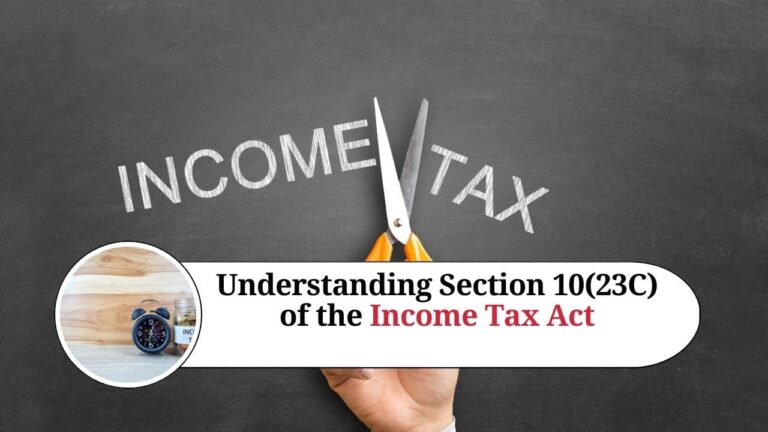The Debt Service Coverage Ratio (DSCR) is a crucial financial metric used to assess a company’s ability to repay its debt obligations. In this blog, we’ll delve into what DSCR is, how it’s calculated, why it matters, and how businesses can optimize it. Whether you’re a business owner, financial analyst, or simply curious about the health of your investments, understanding DSCR can offer valuable insights into a company’s financial stability.
What is the Debt Service Coverage Ratio (DSCR)?
The DSCR measures the cash flow available to meet annual debt obligations, including principal and interest payments. A higher DSCR indicates that a company generates sufficient income to cover its debt obligations, while a lower DSCR may indicate financial stress or an inability to meet debt payments.

DSCR Formula
The formula for calculating DSCR is:DSCR=Net Operating Income (NOI)Total Debt Service (Principal + Interest)\text{DSCR} = \frac{\text{Net Operating Income (NOI)}}{\text{Total Debt Service (Principal + Interest)}}DSCR=Total Debt Service (Principal + Interest)Net Operating Income (NOI)
Where:
- Net Operating Income (NOI): The income remaining after all operating expenses, excluding taxes and interest, have been paid.
- Total Debt Service: The sum of all debt-related payments, including both principal and interest, that a company must make within a specified period.
Why is DSCR Important?
Lenders and investors use DSCR to evaluate the risk of lending to or investing in a business. A DSCR of less than 1 indicates that a company does not generate enough income to cover its debt, which may be a red flag for potential defaults. Conversely, a DSCR greater than 1 shows that a company is generating sufficient cash flow to meet its debt obligations, making it a more attractive candidate for loans or investment.
Key Components of DSCR
Understanding the key components that influence DSCR can help businesses manage and optimize their ratio:
- Net Operating Income (NOI):
- Higher NOI increases DSCR, signaling better financial health.
- Businesses can boost NOI by increasing revenue or reducing operating expenses.
- Total Debt Service:
- Lowering total debt service (reducing loan payments or negotiating lower interest rates) can improve DSCR.
- Companies with a high debt service relative to NOI may struggle to maintain a strong DSCR.
How to Improve Your DSCR
Businesses can adopt several strategies to improve their DSCR and become more attractive to lenders:
- Increase Revenue: Explore opportunities to generate higher sales or diversify revenue streams. Higher revenue contributes to a stronger NOI and, thus, a higher DSCR.
- Cut Operating Expenses: Analyzing and optimizing operational efficiency can reduce expenses, thereby improving NOI and DSCR.
- Refinance Existing Debt: Businesses can negotiate better terms on their existing debt, such as lower interest rates or extended repayment periods, to reduce total debt service and improve DSCR.
- Delay New Borrowing: Taking on new debt can negatively impact DSCR by increasing the total debt service. It’s essential to carefully consider the need for new loans and assess the impact on the company’s financial health.
What is a Good DSCR?
A “good” DSCR varies by industry and specific lender requirements. However, as a general rule:
- A DSCR of 1.25 or higher is often considered favorable by lenders.
- A DSCR of 1.0 indicates that the company generates just enough income to cover its debt, but there is no margin for error.
- A DSCR below 1.0 means the company does not have sufficient income to meet its debt obligations, which may raise concerns among lenders and investors.
DSCR in Different Industries
DSCR expectations may vary depending on the industry. For example:
- Real Estate: In commercial real estate, a DSCR of 1.2 to 1.5 is generally considered good.
- Manufacturing: Lenders often look for a DSCR of 1.5 or higher, given the capital-intensive nature of the industry.
- Service Sector: Service industries may have lower DSCR thresholds, as their debt structures tend to be less significant than capital-heavy sectors.
DSCR and Loan Eligibility
Lenders use DSCR as a key determinant for loan eligibility. A strong DSCR:
- Increases the chances of securing a loan.
- Allows for more favorable loan terms, such as lower interest rates or extended repayment periods.
On the other hand, a weak DSCR may result in:
- Loan rejections.
- Higher interest rates and stricter repayment conditions.
Real-Life Example of DSCR Calculation
Let’s look at an example to understand how DSCR works:
- Net Operating Income (NOI): ₹50,00,000
- Total Debt Service (Principal + Interest): ₹40,00,000
Using the formula:DSCR=50,00,00040,00,000=1.25DSCR = \frac{50,00,000}{40,00,000} = 1.25DSCR=40,00,00050,00,000=1.25
In this case, the company’s DSCR is 1.25, which indicates that it generates 25% more in
Common Mistakes in DSCR Calculation
- Ignoring Variable Costs: Make sure to account for all variable costs in the NOI, as overlooking them can result in an inaccurate DSCR.
- Focusing Solely on Short-Term Debt: Include both short-term and long-term debt obligations in the total debt service calculation to get an accurate DSCR.
- Misclassifying Income and Expenses: Ensure that operating income is correctly classified, excluding non-operating items like taxes, to avoid skewing the ratio.
FAQs on DSCR
Q: What is the ideal DSCR for a business?
A: While the ideal DSCR varies by industry, a ratio of 1.25 or higher is generally considered healthy.
Q: Can a company with a low DSCR still get a loan?
A: Yes, but the loan may come with higher interest rates or require collateral to mitigate the risk for lenders.
Q: Does DSCR account for tax obligations?
A: DSCR is typically calculated before taxes and interest, focusing on the operating income and debt service only.
Conclusion
The Debt Service Coverage Ratio (DSCR) is a critical measure of financial health for businesses and an essential metric for lenders. A good DSCR indicates a company’s ability to generate enough income to comfortably meet its debt obligations, which in turn boosts its attractiveness for loans and investments. By improving NOI, managing debt effectively, and understanding industry-specific DSCR expectations, businesses can position themselves for long-term financial success.



